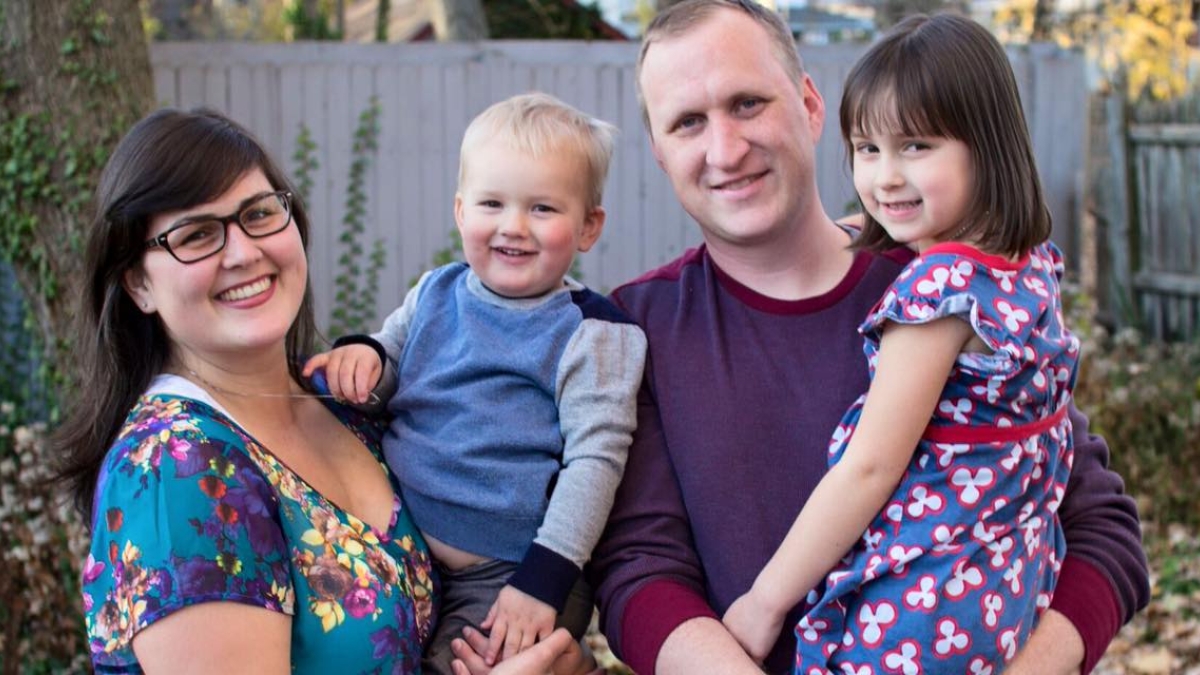ASU physics alum shares how his interdisciplinary track became a career springboard

Originally from the Phoenix area, ASU alumnus Joe Crabtree now lives in Collingswood, New Jersey, with his family. Photo provided by Crabtree.
Whether it’s the smartphone in your pocket or the Fitbit on your wrist, most of us don’t think twice about the working parts behind the products we use every day. But as a scientific instrument engineer, those are the mechanisms Arizona State University alumnus Joe Crabtree has made a career creating and improving.
Crabtree holds a Bachelor of Science in physics and a Master of Science Engineering in electrical engineering, both from ASU. Since earning them, he’s worked on everything from developing materials-testing devices to creating innovative consumer goods. Today it’s his passion, but it wasn’t always that way.
Crabtree didn’t give much thought to either ASU or his undergraduate major, at least in the beginning. Growing up some 20 miles away from the Tempe campus in Chandler meant classes were close enough to commute to from home. And without a grand career plan in mind, it made sense to keep his options open.
“I went to ASU because it was the local school,” he said. “I didn’t necessarily know what I wanted to be, honestly, and I just started studying physics because that’s what I was interested in.”
That changed when he landed a job at Molecular Imaging Corporation, then a Tempe-based company co-founded by ASU physics professor Stuart Lindsay manufacturing and designing nanotechnology research tools. And what started as a simple way to work through college ended up sparking the drive that would shape his career.
Crabtree continued working with Lindsay and the rest of the team throughout his undergraduate studies, moving from building the devices to troubleshooting and designing them. By the time he graduated in 2005, the company was in the midst of being acquired by California-based research and development firm Agilent Technologies. With his undergraduate degree out of the way, Crabtree accepted a full-time job with the firm and returned to ASU to pursue his master’s degree.
Making the jump from physics to engineering isn’t always intuitive. But Crabtree believes his transition went smoothly because life and applied sciences are already well-connected within the college. Two diplomas and over a decade later, he says his time in Tempe provided a platform to build a multifaceted career organically.
“Meeting these people and getting these opportunities, all through ASU, helped me develop a view of who I wanted to be, having not really known in the beginning,” he said. “It was a great place to explore different things and see how disciplines fit together, and I don’t think I would have done that if I hadn’t been at a place that encouraged it.”
Now an engineer at Philadelphia-based firm TA Instruments, Crabtree develops rheometers, measurement devices used across industries to test material properties. He also works as an independent contractor through his company Emergent Devices LLC, helping companies produce electrical components for new products. Last year, he worked with Philadelphia startup Roar for Good to develop Athena, a women’s safety device designed to sound an alarm or notify emergency contacts in the event of an attack.
Having a background in both physics and electrical engineering allows for a more complete understanding of the entire device manufacturing field, Crabtree said, a combination ASU’s interdisciplinary coordination helped foster.
“I’m not a physicist and, in some ways, I’m not an electrical engineer, I’m a little bit of both,” he said. “I think ASU in particular encouraged that sort of cross-disciplinary stuff.”
Going into a position that employs both scientific discovery and engineering prowess, Crabtree says he’s happy to have covered a wide array of sciences while still in school. And for other students who are unsure of exactly where they’ll end up, his advice is simple: Stay curious and work hard.
“Knowledge isn’t only allowed to those with a degree in that field,” he said. “You built breadth by having curiosity and not being afraid to bite off things that are tangentially related to what you know from school.”
He was able to turn what began as a simple college job into a pointed career trajectory. But in the vast ecosystem of the college, Crabtree says his story isn’t extraordinary; it’s the norm.
“I don’t think by any stretch that I’m exceptional, quite the opposite,” he said. “I was a regular person who came and worked hard to seize the opportunities available to me, and now I have a career that I love.”
More Science and technology
Large-scale study reveals true impact of ASU VR lab on science education
Students at Arizona State University love the Dreamscape Learn virtual reality biology experiences, and the intense engagement it…

ASU-led space telescope is ready to fly
The Star Planet Activity Research CubeSat, or SPARCS, a small space telescope that will monitor the flares and sunspot activity…

ASU at the heart of the state's revitalized microelectronics industry
A stronger local economy, more reliable technology, and a future where our computers and devices do the impossible: that’s the…

